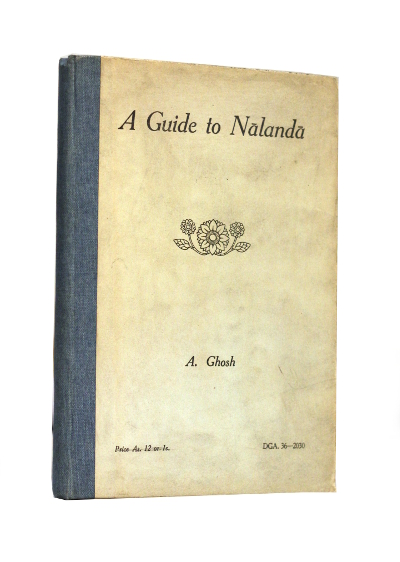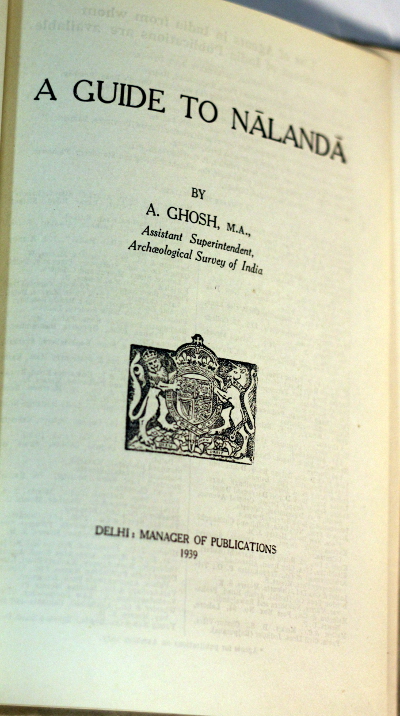The first tourist guide to Nalanda, written shortly after the first round of excavations undertaken by the Archaeological Survey of India.
About Nalanda (from Wikipedia):
Nalanda was an acclaimed Mahavihara, a large Buddhist monastery in the ancient kingdom of Magadha (modern-day Bihar) in India. The site is located about 95 kilometres (59 mi) southeast of Patna near the town of Bihar Sharif, and was a centre of learning from the seventh century BCE to c. 1200 CE. It is a UNESCO World Heritage Site.
Much of our knowledge of Nalanda comes from the writings of pilgrim monks from East Asia such as Xuanzang and Yijing who travelled to the Mahavihara in the 7th century. Vincent Smith remarked that “a detailed history of Nalanda would be a history of Mahayanist Buddhism”. Many of the names listed by Xuanzang in his travelogue as products of Nalanda are the names of those who developed the philosophy of Mahayana. All students at Nalanda studied Mahayana as well as the texts of the eighteen (Hinayana) sects of Buddhism. Their curriculum also included other subjects such as the Vedas, logic, Sanskrit grammar, medicine and Samkhya.
According to Xuansang and Yijing Nalanda was built in honor of the Lotus Sutra – and various Lotus Sutra symbolism can be found in the Nalanda Museum.
About the author (from Wikipedia):
Amalananda Ghosh was an Indian archaeologist, the author and editor of numerous works on India’s ancient civilizations, and the organizer and director of archaeological expeditions during the mid-1900s.
Ghosh joined the Archaeological Survey of India in 1937 and eventually rose to become its Director-General. He served in that position from 1953 to 1968.
During his period with the Survey, Ghosh led or participated in a number of excavations, including investigations at Pachmarhi, Bikaner, Brahmagiri,Maski, Taxila, Arikamedu, and Harappa. In 1950, Ghosh organized and began a systematic exploration of the Bikaner site, along the dried-up bed of the ancient Saraswati River. Within a few months, his work uncovered 70 sites, 15 of which yielded similar antiquities to those found at Harappa and Mohenjodaro.
During his tenure as Director General, the landmark Centenary of the Archaeological Survey of India was held in 1961.
Following his term with the Survey, Ghosh acted as a UNESCO consultant on archaeology to the Governments of Qatar (1968), Bahrain (1968), Saudi Arabia (1968–69) and Yemen (1970). He was a Fellow of the Indian Institute of Advanced Study from 1968 to 1971.
Ghosh authored and edited a number of books and publications over the span of his career, including The Encyclopedia of Indian Archaeology, a comprehensive reference book on archaeological work conducted over the years in India. Other works include A Survey of the Recent Progress in Early Indian Archaeology, The City in Early Historical India, and A Guide to Nālandā.





